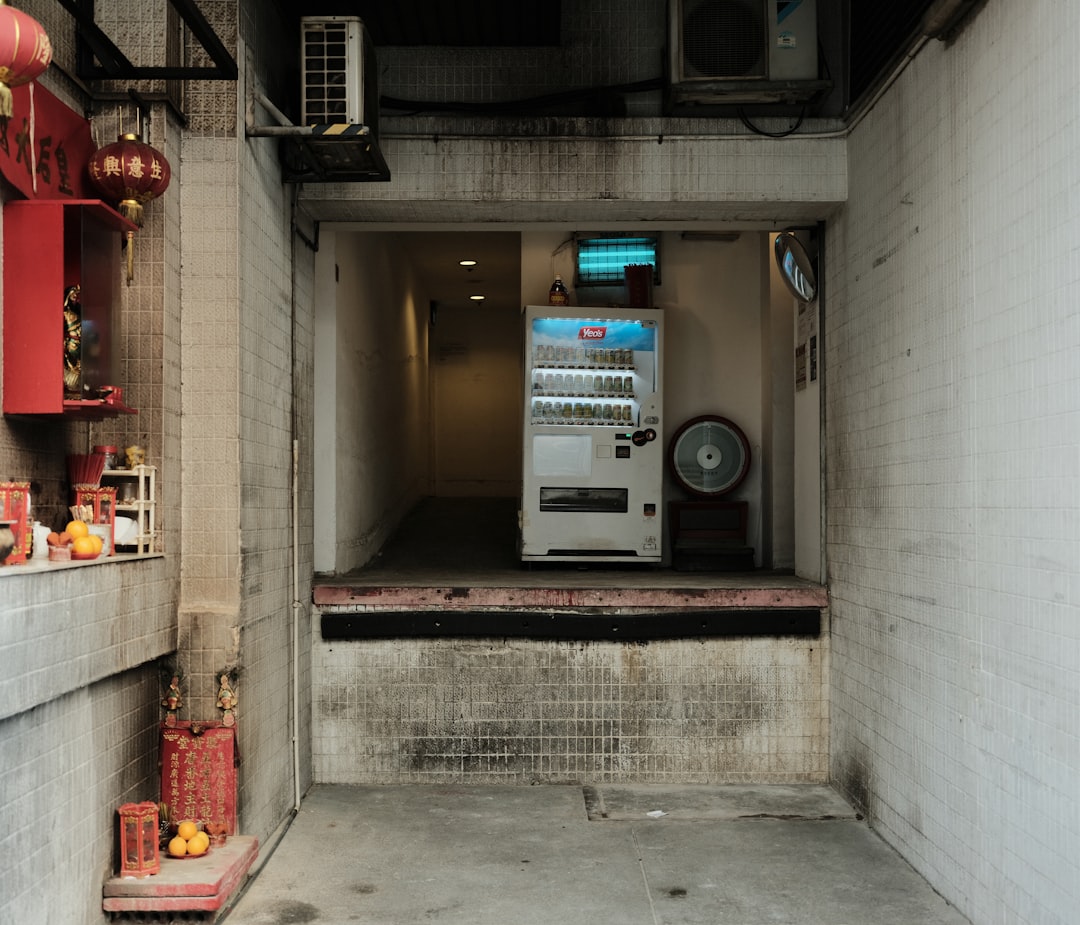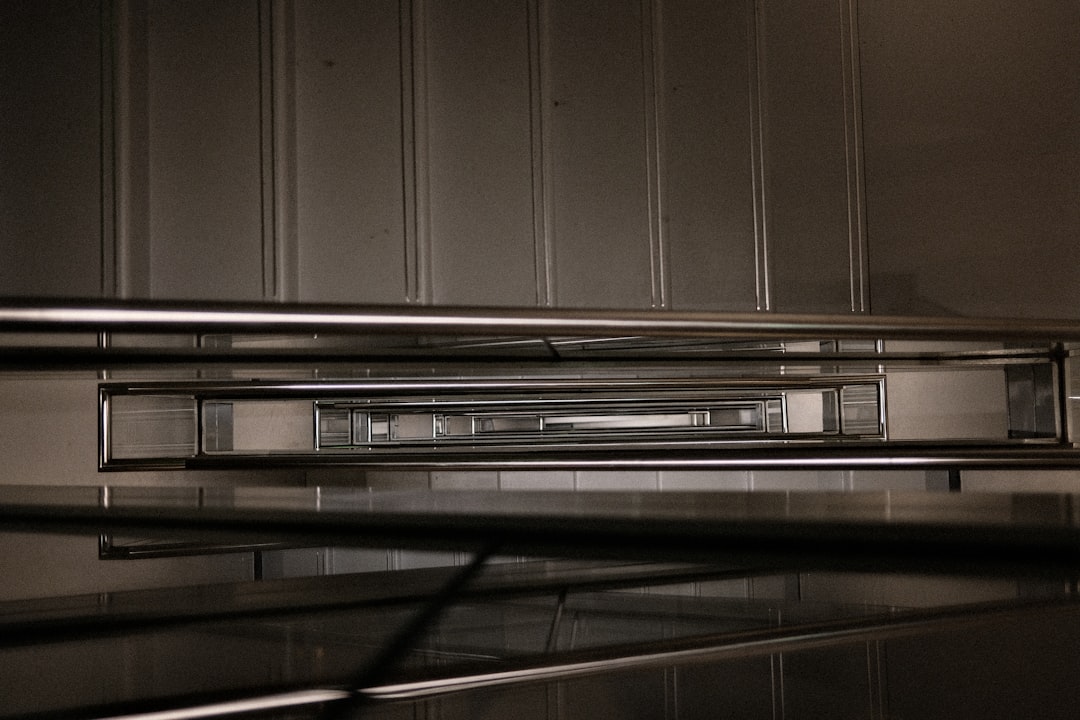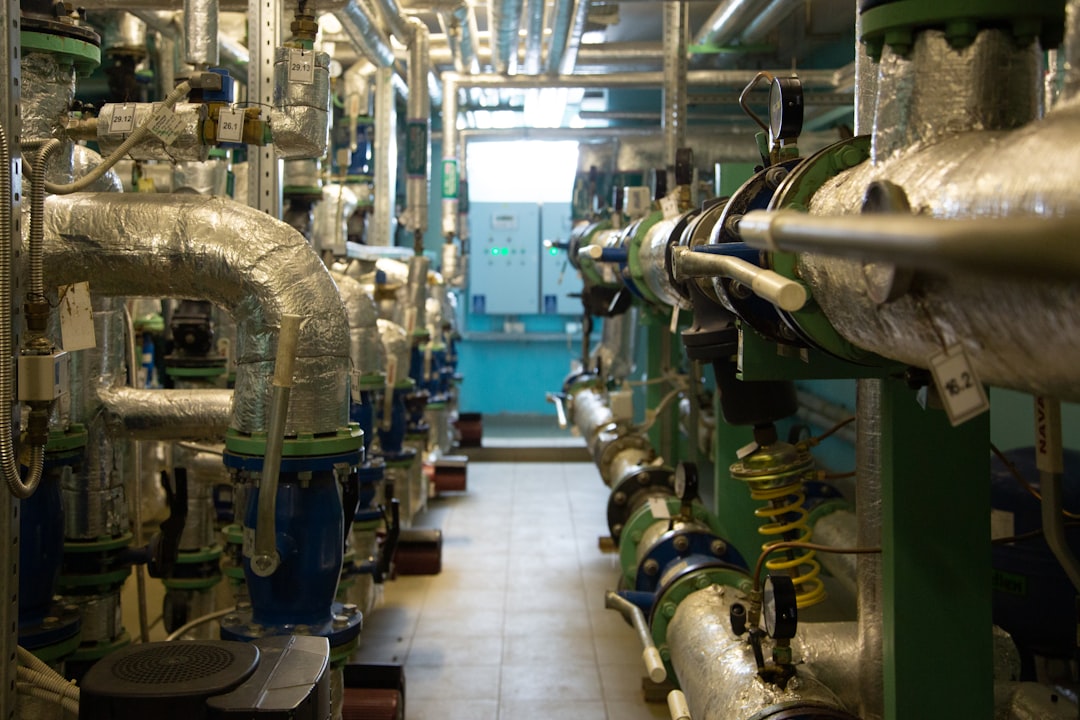

Engage prospects with a scan and streamline customer engagement with FREE QR code marketing tools by Sona – no strings attached!
Create a Free QR CodeFree consultation

No commitment

Engage prospects with a scan and streamline customer engagement with FREE QR code marketing tools by Sona – no strings attached!
Create a Free QR CodeFree consultation

No commitment
In today’s digitally driven world, QR codes have evolved from a simple utility into a strategic powerhouse that connects offline engagement with online action. For furnace cleaning services, they enable instant booking, on-the-spot education, and measurable follow-up without the friction of app downloads or manual data entry. The result is faster conversions, richer customer insights, and a more consistent pipeline.
QR codes meet customers where they are: on invoices, door hangers, equipment tags, and service vehicles. By turning physical touchpoints into digital entry points, furnace cleaning providers can reduce the lag between interest and action, ensure every interaction is tracked, and build a healthier, more predictable funnel. This guide shows how to deploy QR codes thoughtfully across your furnace cleaning customer journey, from prospecting to post-service retention, with practical tips you can implement immediately.

Missed or untracked high-intent prospects are a common pain point for furnace cleaning businesses. Paper forms get lost, generic flyers go unmeasured, and customers often intend to call later but forget. QR codes provide an immediate path from curiosity to conversion and make every scan measurable. When placed strategically and tied to clear calls to action, they streamline data capture, shorten the path to booking, and create a foundation for continuous optimization.
Think of QR codes as a simple way to replace outdated and error-prone processes. Instead of paper sign-up sheets at community events, use QR-enabled forms that sync to your CRM. Instead of generic brochures that end in a drawer, use dynamic codes that direct prospects to seasonal offers, estimate tools, and one-click scheduling. This shift does not just increase lead quantity; it also improves lead quality, because every scan indicates real intent that you can segment and nurture.
By adopting QR codes, furnace cleaning providers can replace slow, manual workflows with a responsive, data-driven system. Every scan becomes a signal you can act on, lifting conversion rates, improving sales prioritization, and creating a repeatable process that scales with your regional footprint.

Many furnace cleaning companies still depend on physical materials, yet the gap between offline impressions and online action often goes unaddressed. Customers read door hangers or receive a reminder postcard, then wait to take action until the moment has passed. QR codes close this gap. They turn attention into action immediately, while also capturing data that was previously invisible.
Several attributes make QR codes especially powerful in this vertical: speed, flexibility, trackability, and cost efficiency. Furnace cleaning decisions often happen at specific moments, such as when a technician finishes a service or when a homeowner receives an invoice. A QR code at these touchpoints eliminates friction and shows you which materials pull their weight.
When applied thoughtfully, QR codes turn typical furnace cleaning materials into measurable, high-performing assets. They also make it easier to justify spend, because you can connect scans to booked jobs and revenue rather than relying on guesswork.

Not all QR codes serve the same purpose. Selecting the right format based on your use case ensures a smoother customer experience and better data. Furnace cleaning providers typically benefit most from formats that trigger bookings, facilitate contact, and capture feedback, all while feeding data into CRM and analytics tools. For HVAC-specific tactics, see the Sona QR HVAC guide.
Static codes work when the destination will not change, such as a brochure PDF or a general contact page. Dynamic codes are better for campaigns that need tracking, AB testing, or frequent updates. In most furnace cleaning scenarios, dynamic is the safer choice, because it enables segmentation and optimization without reprinting.
With Sona QR, you can create and manage these formats in one place, set up dynamic destinations, and monitor performance. The right format paired with the right placement ensures a smoother customer journey and clearer attribution.

Growth in furnace cleaning often hides in plain sight. Your offline touchpoints are already in homes and neighborhoods where demand exists. QR codes make those touchpoints actionable and measurable. The key is to place QR codes at moments of high intent and to tailor the CTA to the customer’s context.
Prioritize placements where scanning is natural and safe, such as invoices, service stickers near the furnace, and direct mail that homeowners read at the kitchen table. Reinforce your brand and CTA with a short benefit statement, for example “Scan to save 15 percent on your next cleaning,” and ensure the landing page matches the promise.
Thoughtful placement backed by clear CTAs ensures that every scan is a signal you can act on. Over time, your data will reveal where the best opportunities exist and how to refine your messaging for each micro-moment.

QR codes shine when they map to common customer interactions and give homeowners an easy next step. In furnace cleaning, the best use cases reduce friction at booking, educate customers in context, and capture feedback that drives referrals and repeat business.
When selecting use cases, match the destination to the moment. A door hanger should drive to a seasonal discount page, while a service sticker near the furnace should open a maintenance log or rebooking flow. Use dynamic codes so you can adapt the destination to seasonality without reprinting.
If you are just starting, pilot two or three use cases for 30 to 60 days and measure scan-to-booking rates. Your data will show where to scale and which segments respond best to each tactic.
Every scan captures context that helps you understand who is interested and why. By deploying unique QR codes across channels and stages of the buyer’s journey, you can automatically segment audiences and tailor your follow-up. This turns a generic list into a set of high-value micro-segments that you can retarget through email, SMS, and paid media.
Furnace cleaning has clear audience distinctions: homeowners versus property managers, emergency repair seekers versus routine maintenance shoppers, and new movers versus long-time residents. Tagging scans by use case and placement lets you deliver relevant messages to each group, which increases conversion and reduces wasted ad spend.
This intent-driven segmentation helps your team move from blanket messaging to precision marketing. It reduces follow-up lag, raises relevance, and keeps your brand top of mind until the prospect is ready to book.
QR codes do more than provide a convenient link. They unify your offline and online channels, enabling a connected customer journey from first impression to booked job. When every print asset becomes a tracked gateway to a digital destination, your marketing mix becomes easier to measure and optimize.
For furnace cleaning providers that depend heavily on local presence and repeat service, this connected approach is especially valuable. It lets you see which neighborhoods, events, and materials produce not only scans but revenue. It also reduces the time your team spends guessing what works.
With a platform like Sona QR, you can manage all codes centrally, monitor performance in real time, and sync scan data to your CRM and ad tools. This closes the loop on attribution and helps you scale what works.
Getting started does not require a massive overhaul. A simple, structured rollout will generate results quickly, then you can expand based on what your data shows. The following steps keep your team aligned and your deployment clean, from planning to optimization.
Focus on one or two high-intent use cases first, such as invoicing and door hangers, and ensure the destination pages are mobile friendly. Once you see consistent scan-to-booking performance, extend the program to events, vehicles, and equipment labels.
Identify where lead capture is inconsistent or delayed. For many providers, this includes post-service follow-up, seasonal tune-up promotions, and upsell campaigns for duct cleaning or indoor air quality add-ons. Prioritize moments where customers already have their phone in hand and a reason to act, such as reviewing an invoice or reading a door hanger.
Align each use case with a specific outcome. Examples include “increase next-visit bookings from invoices by 20 percent,” “collect 100 new leads from the fall postcard drop,” or “enroll 50 customers into annual maintenance plans from service stickers.”
Choose static codes for destinations that will never change, such as a PDF maintenance checklist. Choose dynamic codes for campaigns that require tracking, AB testing, or content updates. In most furnace cleaning scenarios, dynamic codes provide essential flexibility and analytics.
Plan your taxonomy and naming conventions before you generate codes. Include channel, location, and purpose in the name, for example “Postcard_Fall_TuneUp_WestEnd,” to keep reporting clean and actionable.
Design for clarity and contrast. Add your logo, brand colors, and a concise CTA such as “Scan to book now,” or “Scan for 15 percent off your next cleaning.” Use sufficient white space and keep the code at least 0.8 inches on print materials to ensure reliable scans.
Test on multiple devices, in different lighting conditions, and at various distances. Validate that the destination page loads quickly on mobile, the form fields are minimal, and the thank-you page is clear about next steps. Include ALT text near the code for accessibility and a short vanity URL for those who prefer to type.
Roll out QR codes on the channels most likely to convert quickly. Start with invoices, service stickers, and door hangers. Expand to vehicle wraps, event signage, and neighborhood flyers once you have validated messaging and destinations. Match the CTA to context, for example “Scan to rebook in 30 seconds” on invoices and “Scan to claim your preseason discount” on mailers.
Coordinate deployment with seasonality. Promote tune-ups in the fall, duct cleaning in the spring, and emergency support in peak winter. Use dynamic codes to update the destination without reprinting.
Set up analytics before launch. With Sona QR, you can track scans by time, location, device, and source, and you can push events into your CRM to tie scans to opportunities and revenue. Add UTM parameters to all destinations so you can compare performance across placements and creative.
Monitor conversion behavior and drop-off points weekly. AB test landing pages, incentive levels, and CTAs. Retire underperforming placements and reinvest in those with high scan-to-booking rates. Share results with technicians so they understand which materials and messages work best.
A disciplined approach like this builds momentum quickly. Within a quarter, you can establish a reliable baseline, validate your strongest channels, and scale with confidence across your service area.
Measurement is the difference between guessing and growing. For furnace cleaning teams, it is not enough to know how many scans occurred. You need to see whether those scans led to bookings, maintenance plan enrollments, and repeat revenue. A connected analytics stack gives you visibility from the first scan to the final invoice.
Start by defining success metrics for each placement. For example, you may track scan-to-form-start, form completion, and bookings generated per 1,000 door hangers. On invoices, track scan-to-rebook rate. Across all assets, record cost per scan and cost per booked job. Over time, these benchmarks guide budget allocation and creative decisions.
With Sona QR and Sona.com, you can capture detailed scan data, enrich CRM records, and apply multi-touch attribution. This shows how QR engagement contributes to pipeline and closed revenue, giving you the confidence to scale investments that work.
Once your foundation is in place, a few best practices will magnify results. Focus on making scans actionable, tying every interaction to a next step, and educating both staff and customers on what to expect from scanning.
Treat QR codes as part of your standard operating procedure. Train technicians to point them out during visits and briefly explain the benefits. In a trust-based service like furnace cleaning, a quick, friendly explanation goes a long way toward increasing engagement.
You can create, track, and optimize these codes in minutes with Sona QR. Start creating QR codes for free.
Furnace cleaning providers face a familiar set of challenges: manual processes, fragmented touchpoints, and hard-to-prove marketing ROI. QR codes offer a practical, high-impact solution. They turn every physical surface into a digital entry point and every moment of interest into a measurable action. With the right strategy, they compress the time from attention to appointment, enrich your customer data, and enable consistent follow-up at scale.
Here is the bottom line. QR codes deliver instant engagement, a connected customer experience from awareness to conversion, and actionable data that transforms each scan into a growth signal. With Sona QR and Sona.com, you can manage codes centrally, attribute scans to revenue, and orchestrate automated workflows that keep your brand top of mind. Begin with one or two high-intent use cases, measure relentlessly, and expand based on results. Your next wave of qualified leads may be only a scan away.
QR codes have transformed furnace cleaning services from routine maintenance into dynamic, customer-centric experiences. By enabling instant access to service details, safety tips, and booking options, they streamline customer acquisition and significantly enhance client engagement. Imagine your customers effortlessly scanning a code to schedule their next cleaning or access tailored maintenance advice—boosting satisfaction and loyalty in real time.
With Sona QR, you can create dynamic, trackable QR codes that update instantly without the need for reprinting, giving you full control over campaigns and insights. Every scan becomes a measurable touchpoint, connecting offline service interactions directly to customer retention and revenue growth. Start for free with Sona QR today and turn every scan into a seamless customer experience and a powerful growth opportunity for your furnace cleaning business.
QR codes enable instant booking, provide on-the-spot education, capture measurable data, reduce friction in customer interactions, and help track and optimize marketing efforts to increase lead quality and conversion rates.
QR codes replace outdated paper forms and flyers with digital journeys that sync to CRMs, shorten the path to booking, enable real-time tracking, and convert high-intent prospects immediately, reducing lost or untracked leads.
Effective placements include invoices, door hangers, service stickers near equipment, technician badges, vehicle wraps, direct mail, event signage, and lawn signs where customers are likely to engage naturally and safely.
Common formats include dynamic web links for booking or estimates, vCards for contact sharing, forms for service requests, SMS or email prompts, app download links, and feedback or review collection pages.
Dynamic QR codes allow changes to destinations without reprinting, enable tracking and A/B testing, support segmentation and optimization, and reduce waste by updating seasonal offers or emergency support pages on the fly.
By deploying unique QR codes across customer journey stages and locations, companies can segment audiences by intent and behavior, sync scan data to CRMs, and retarget prospects with personalized campaigns that increase conversion.
Steps include choosing high-intent use cases, selecting QR code types, designing and testing codes for clarity and mobile friendliness, deploying on high-impact channels, and tracking and optimizing performance regularly.
Technicians should point out QR codes on stickers or cards, explain their benefits briefly, use simple scripts highlighting speed and value, and encourage customers to scan for quick rebooking or maintenance information.
Key metrics include scan volume by placement, scan-to-action conversion rates, cost per booked appointment, repeat booking rates, maintenance plan enrollments, and review generation rates, all tied to revenue attribution.
QR codes unify offline and online marketing channels by turning print and physical assets into trackable digital entry points, enabling seamless progression from awareness to booking and facilitating data-driven optimization.
Use Sona QR's trackable codes to improve customer acquisition and engagement today.
Create Your FREE Trackable QR Code in SecondsJoin results-focused teams combining Sona Platform automation with advanced Google Ads strategies to scale lead generation

Connect your existing CRM

Free Account Enrichment

No setup fees
No commitment required

Free consultation

Get a custom Google Ads roadmap for your business






Launch campaigns that generate qualified leads in 30 days or less.
